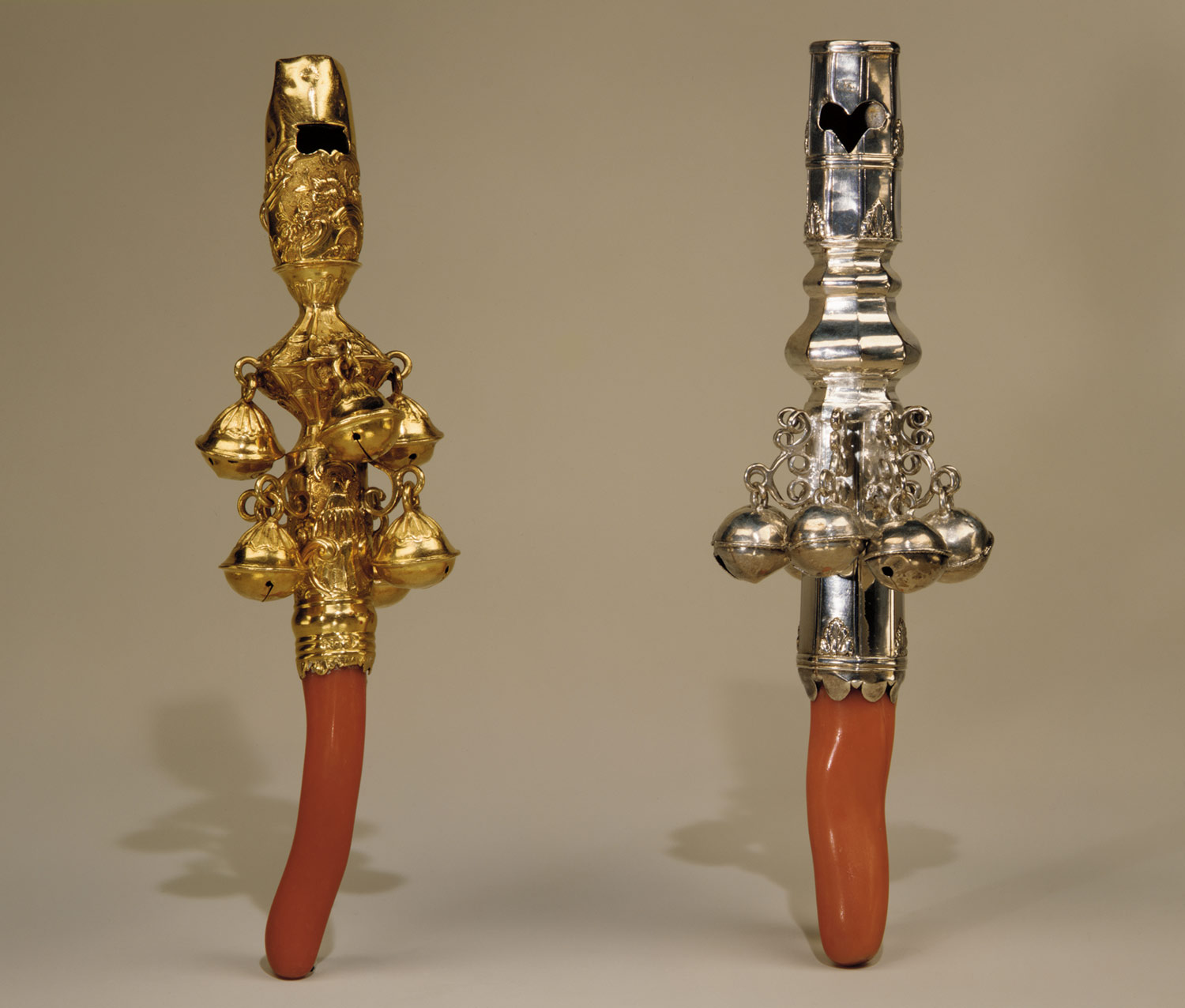We saw the most amazing things that are not yet on display. The first was a baby's rattle (also called coral bells) made of coral and silver, with bells and a whistle on the end. The coral was for teething. Most of the coral on Preservation Virginia's rattle was gone, but it was probably broken off. There were, however, toothmarks in the whistle.
Gold coral bells from the Metropolitan Museum of Art (Source: The Metropolitan Museum of Art)
We also looked at a gold ring, inscribed with a skull and the phrase "Memento Mori," "Remember Death." I got it stuck on my finger, like a pro. I also held a human femur to examine the polyethylene glycol that was used to replace the cells damaged by water that had pooled in the grave. Pieces of bone or wood that have been PEG'd are lighter than you would expect them to be, as the substance has leeched into and filled gaps caused by decay.
We were privileged to see a piece of slate found in "the John Smith well" (called such as it was dug under the direction of John Smith). Deep scratches have been left behind on the slate, and a team of archaeologists, scientists, and experts have been trying to decode the words and images left behind. Drawings of birds and human figures cover the slate, as well as the phrase "A minion of the finest sorte."
You can read more about the slate at Preservation Virginia's website or the article by National Geographic.
I don't think conservation is the career for me, since I don't think I could handle all the chemistry classes required for it. Nevertheless, I find it to be one of the most interesting parts of the field of archaeology.


